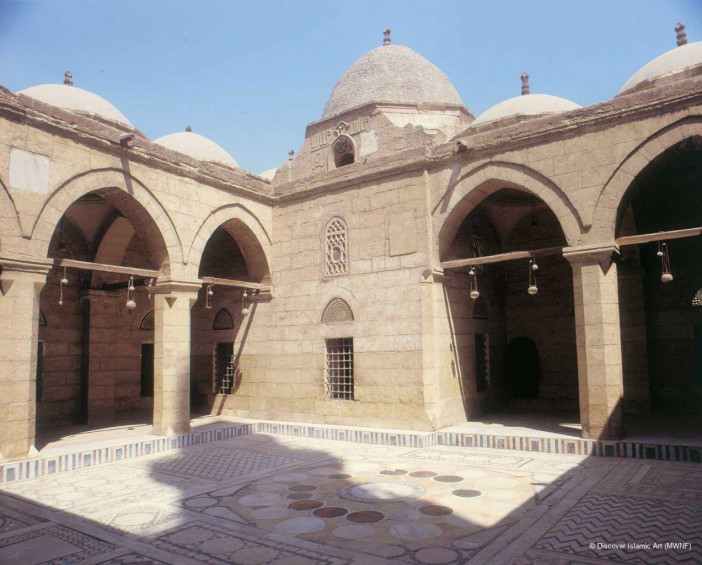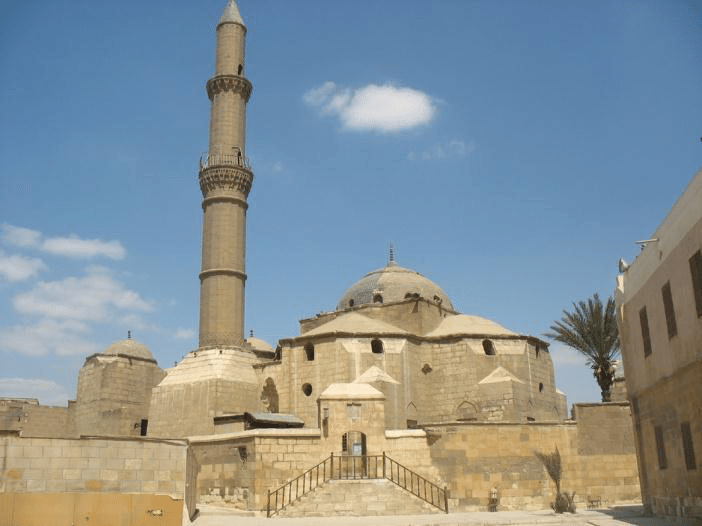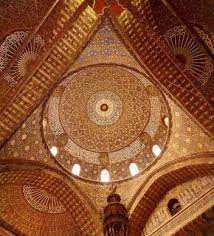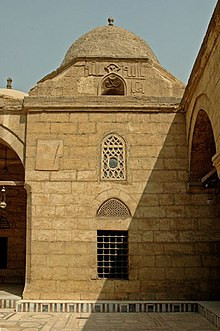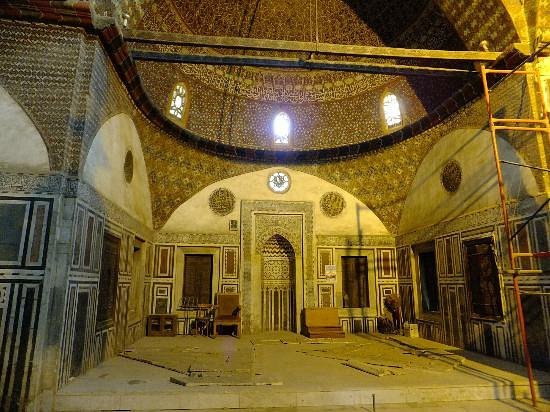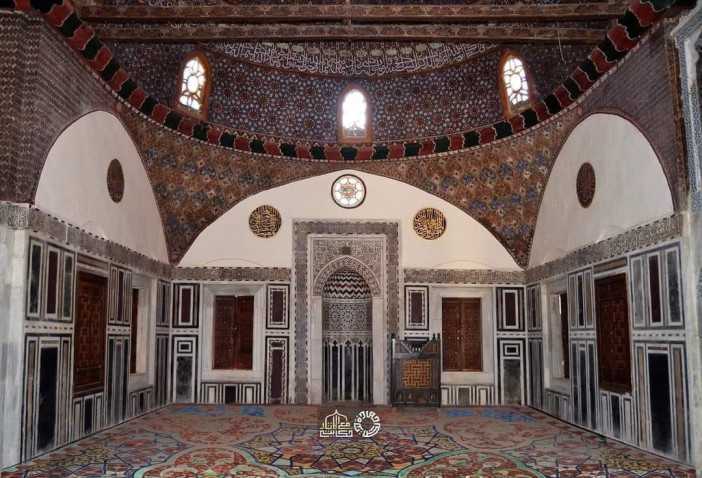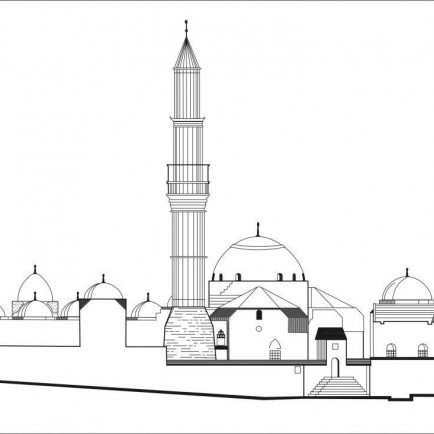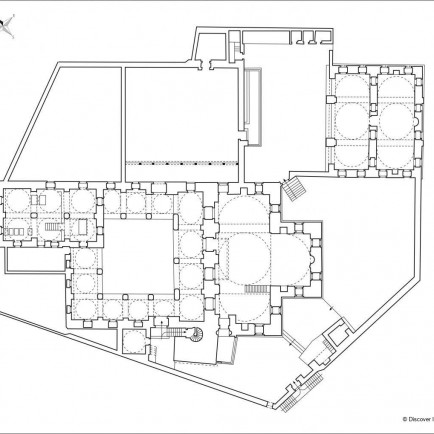Suleyman Pasha Mosque
History
The Mosque of Suleyman Pasha al-Khadim, the first erected in Egypt under Ottoman rule, was built in 1528 by the governor for the use of the Janissaries quartered in the northern enclosure.
Urban and Architectural
The mosque is predominantly Ottoman in layout and profile.The prayer hall adopts the Ottoman T-shaped version and is covered by a small central dome in the Ottoman style, flanked by 3 half-domes.It is preceded by a courtyard surrounded by cupola arcades.The minaret is of the same Ottoman shape with a faceted cylindrical tree surmounted by a conical floret, and located to the right of the front façade.It is elevated to a proportional height on the little mosque.
The interior reflects the exterior Ottoman shape with the dome resting on spherical pendants, and is decorated with marble cladding, inscriptions, painting, and intricate stucco.
Description
Other features of the complex include a Fatimid-era sanctuary, rebuilt with its entrance embedded in the arcades of the courtyard.It was originally erected by Abu Mansur Qasta, governor of Alexandria around 1140, to house his tomb, and dedicated to Sidi Sariya, a companion of the Prophet, hence the common name of the mosque. A second courtyard above two rooms including a kuttab was built to the north of the mosque.The domes of the kuttab were covered in blue diamonds.The complex was completed with a sabil, which no longer exists, and a perimeter wall that encompasses other subsidiary yards and gardens.
Details
Location
2 Zoukak Saheb Al Magaes, Al Abageyah, El Khalifa, Cairo Governorate, Egypt
Worshippers
1000
Owners
Suleyman Pasha al-Khadim
Year of Build
1528
Area
2600
Drawings
Map
History
The Mosque of Suleyman Pasha al-Khadim, the first erected in Egypt under Ottoman rule, was built in 1528 by the governor for the use of the Janissaries quartered in the northern enclosure.
Urban and Architectural
The mosque is predominantly Ottoman in layout and profile.The prayer hall adopts the Ottoman T-shaped version and is covered by a small central dome in the Ottoman style, flanked by 3 half-domes.It is preceded by a courtyard surrounded by cupola arcades.The minaret is of the same Ottoman shape with a faceted cylindrical tree surmounted by a conical floret, and located to the right of the front façade.It is elevated to a proportional height on the little mosque.
The interior reflects the exterior Ottoman shape with the dome resting on spherical pendants, and is decorated with marble cladding, inscriptions, painting, and intricate stucco.
Description
Other features of the complex include a Fatimid-era sanctuary, rebuilt with its entrance embedded in the arcades of the courtyard.It was originally erected by Abu Mansur Qasta, governor of Alexandria around 1140, to house his tomb, and dedicated to Sidi Sariya, a companion of the Prophet, hence the common name of the mosque. A second courtyard above two rooms including a kuttab was built to the north of the mosque.The domes of the kuttab were covered in blue diamonds.The complex was completed with a sabil, which no longer exists, and a perimeter wall that encompasses other subsidiary yards and gardens.


